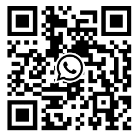2023 marks the tenth year of the first LoRa chip, and recently Semtech, the main provider of LoRa technology and chips, celebrated its 10th anniversary. It is understood that in the past decade, LoRa communication technology has delivered a satisfactory answer in the global market.
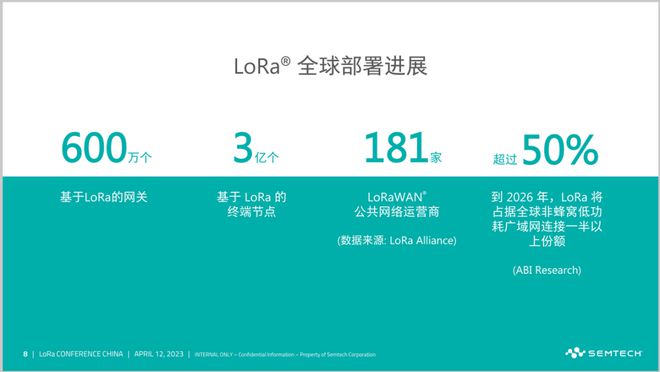
However, in the market segment, LoRa in the domestic and foreign development characteristics are not exactly the same, especially in the terminal equipment and application scenarios. In addition, compared with similar technology NB-IoT, LoRa also has different development paths due to its different technical characteristics and industry specifications. In addition, the future development of LoRa is also towards more technology integration and platform expansion.
Next, this paper briefly introduces the development of LoRa in recent years, analyzes the development direction of the technology at home and abroad, and discusses the future trend of LoRa technology.
LoRa, moving towards fusion
According to Global Market Insight, the global LPWAN market will exceed $5 billion in 2022 and is expected to grow at a compound growth rate of about 50% from 2023 to 2032 and exceed $350 billion by 2032.
With the emergence of a large number of low-power WAN technologies and the promotion of application cases, after the development of recent years, the technology routes dominated by LoRa, Sigfox and NB-IoT / eMTC have been formed at home and abroad. According to monitoring data from IoT Analytics, a research institute for the Internet of Things industry, the number of iot nodes using the above technologies will account for more than 96% of all low-power WAN nodes in 2021. Among them, NB-IoT and LoRa occupy the top two global market shares with 47% and 36%, respectively, accounting for 83% together, which are the leading technologies in the field of low-power WAN communication.
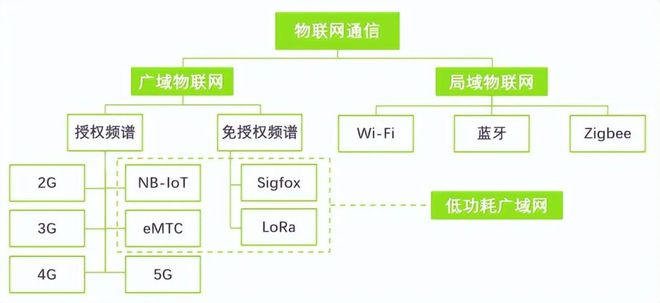
The Internet of Things transmission technology classification
As a non-cellular wide-area Internet of Things communication technology, LoRa has the characteristics of self-group, security, controllable, and has flexibility and autonomy, and does not need to pay for the use of cellular network frequency band.
For this reason, the development path of LoRa must requires greater differentiation.
Technically speaking, LoRa is currently combining more communication technologies, including cell cells, satellites, etc., to realize services through hybrid networks. In August last year, Semtech announced the acquisition of Sierra Wireless to lay out the cellular + non-cellular model. Earlier, in January 2021, Semtech worked with Swarm Technologies, a global satellite communications network developer, to use LoRa for satellite communications.
The integration of LoRa is not limited to technology. In terms of ecology, the LoRa Alliance has not only promoted the formation of a strong LoRa ecosystem globally, but also cooperated with multiple Internet of Things ecosystems around the world to expand the market application. In China, LoRa industry chain has exceeded 3,000 enterprises, forming a huge ecosystem integrating operators, Internet giants, solution providers, module providers and gateway manufacturers, and this ecosystem continues to expand.
Behind the integration is LoRa's strong adaptability to different markets at home and abroad.
On the one hand, in the Chinese market, LoRa is gradually transforming from the traditional WAN to "regional networking". In terms of application, LoRa has also gained a large market through scenario-oriented applications, including agriculture, industry, buildings, parks, etc. Thanks to the low power consumption and long distance of LoRa technology itself, as well as the high flexibility and innovation space it can give to developers, LoRa is selected and recognized by more and more domestic customers.
On the other hand, in December 2021, the International Telecommunication Union (ITU) officially approved LoRa as a standard for low-power wide-area network communication, which further promoted the continuous growth of the deployment number of LoRa network equipment and terminal equipment around the world to meet the needs of the application monitoring under the WAN and support the digital transformation of traditional industries.
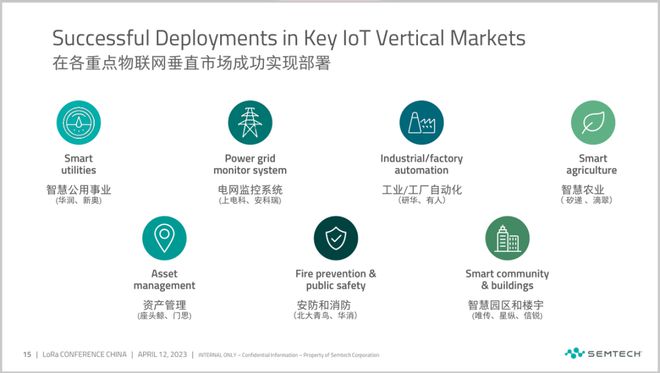
But as a solution in various vertical scenarios, the value of IoT applications lies more in the data. As a communication technology for collecting and transmitting data, LoRa itself does not provide the ability to analyze and process data, so the platform and the cloud have become an important engine for LoRa's sustainable development.
Platform extension, LoRa
According to IoT Analytics, overall enterprise iot spending grew by 22.4% in 2021 to $157.9 billion, and global iot spending is expected to grow by 23% in 2022. Among them, Internet hardware expenditure accounted for 35%, Internet services accounted for 36%, and Internet software expenditure accounted for 26%. According to the calculation of the value distribution of the main links of the Internet of Things industry chain, sensing and communication hardware manufacturers account for about 30% -40% of the value distribution of the industry chain, communication service providers account for about 5% -10%, and vertical industry application solutions (including intelligent hardware) account for about 30% -40%.
From the perspective of market situation, it can be found that in the Internet of Things industry, the proportion of services and hardware and software expenditure is very high, and at the same time, the value of output through solutions and hardware and software has exceeded that of communication. This shows that the value of the platform in practical application is increasingly highlighted.
As an emerging communication technology, LoRa has also released greater potential under the power of the platform.
Over the past decade, Semtech has built the LoRa Chip-to-Cloud (Chip-to-Cloud) platform and provided end-to-end solutions to help customers quickly develop and deploy iot networks, gateways, sensors, modules, and services.
In terms of positioning, Semtech LoRa Edge geolocation platform has been integrated into Tencent Cloud Internet of Things development platform. In the application cases for animal husbandry scenarios, the solution based on Tencent Cloud + LoRa chip can solve the pain points of poor cellular network coverage and excessive number of assets in pastoral areas. LoRa provides the possibility of asset management at a very low cost.
Moreover, in the LoRa industry chain, cooperation cases of several ecological partners around the world are increasing, including Lyelda integrating satellite communication technology, LoRa technology and global satellite resources, providing customers with a new satellite Iot connection scheme based on LoRa; building indoor air quality monitoring network with Assek Technologie based on LoRaWAN®.
In short, more LoRa cases are being developed.
On the other hand, LoRa, which has platform and ecological advantages, is driving the blowout shipment of related hardware equipment due to the excellent properties of the solution.
What hardware does 300 million terminal nodes benefit from LoRa?
The hardware of the Internet of Things is an important carrier of the application of the Internet of Things technology. The realization of the function of the Internet of Things usually requires the hardware to have the ability of information collection, processing and connection, so as to realize intelligent perception, interaction, big data services and other functions, usually including computing, communication, sensing and other functional modules and devices.
According to IoT Analytics, overall enterprise iot spending grew by 22.4% in 2021 to $157.9 billion, and global iot spending is expected to grow by 23% in 2022. Among them, Internet hardware expenditure accounted for 35%, Internet services accounted for 36%, and Internet software expenditure accounted for 26%. It can be seen that in the Internet of Things industry, hardware is both the core and the focus. However, from the perspective of application scenarios, the hardware with the highest correlation with LoRa technology and the largest amount of shipments is the communication module, Internet of Things gateway and sensors.
Communication module
Communication module is the redesign and integration of different chips and devices, providing a variety of choices for customization requirements. It can be used for gateway, base station or internal hardware device communication, so as to realize the interconnection between hardware devices and cloud servers.
According to Market Watch, the global Internet of Things communication module market will grow at $4.188 billion in 2021 and will reach $9.96 billion in 2028, with a compound annual growth rate of 13.2%, creating a broad market space. According to the forecast of China Information and Communication Institute, by 2022, the market size of cellular iot modules in China is 23.18 billion yuan, accounting for 49.8% of wireless communication modules, with a compound growth rate of 28.92%; the market size of low power WAN modules is 15.79 billion yuan, accounting for 36.2% of wireless communication modules, with a compound growth rate of 60.12%; the market size of local iot modules is 7.58 billion yuan, accounting for 16.3% of wireless communication modules, with a compound growth rate of 12.53%.
Internet of Things gateway
The Internet of Things gateway is similar in principle to the router, but the difference lies in that the gateway aggregates sensor data from devices in the Internet of Things environment, converts between sensor protocols, and transmits to the processing node, which also communicates instructions from the processing node to the terminal node.
According to Global Market Insight, the global IoT Gateway market market worth $7.5 billion in 2020 is expected to exceed $20 billion by 2027, with a compound annual growth rate of more than 15% during the forecast period. Edge deployment will become a key component of IoT integration and engagement with connected devices. The Asia-Pacific region is on the way to becoming the world's most important Internet of Things market, and it is expected to reach 11 billion device connections by 2025, according to GSMA. Based on the rapid growth in the number of connected devices, the Asia-Pacific region will also see a significant increase in the demand for the Internet of Things gateway network.
sensor
At present, sensors are developing to the direction of intelligence, miniaturization, multi-function, low power consumption and high precision, and the trend of high-end of sensors is an important driving force for the growth of market scale. According to the forecast of market research firm Next Move Strategy Consulting, from 2019 to 2030, the global sensor industry will grow from $163.84 billion to $426.20 billion in 2019, and the industry growth rate will remain above 5% for a long time, and the market space is broad.
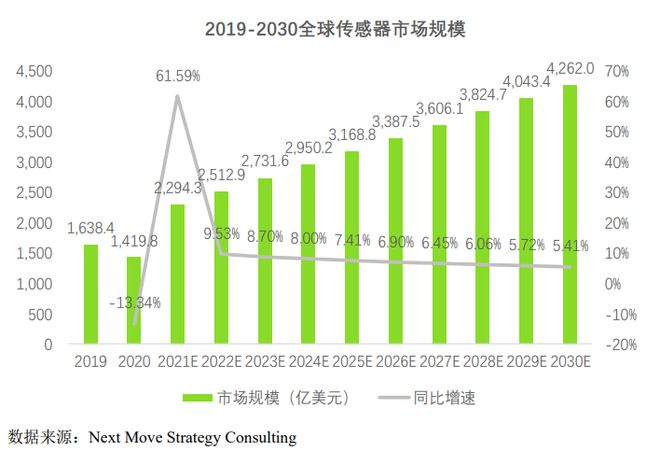
In addition, according to the Markets and Markets report "Smart Sensor Device Market by Type, Technology, End-user Industry and Region (2022-2027)", the global smart sensing device market is expected to grow from $45.8 billion in 2022 to $104.5 billion in 2027, with a compound annual growth rate of 17.9%. The popularity of Industry 4.0 and the Internet of Things will contribute to the widespread use of smart sensors, and defense, automotive, medical, smart industry, smart buildings and consumer electronics are the main application areas of smart sensing devices.
Contact: Qui
Phone: 18146178586
Tel: 18146178586
Email: qui@zonewu.com
Add: 1501-3, Building F03, Phase III, Software Park, Jimei District, Xiamen City, Fujian Province, China
